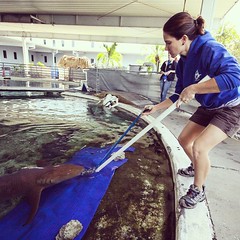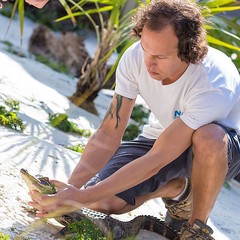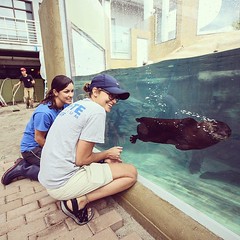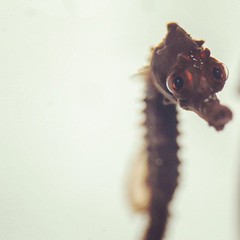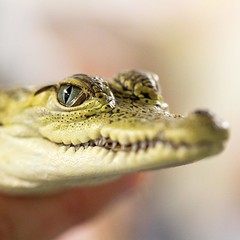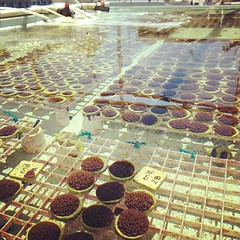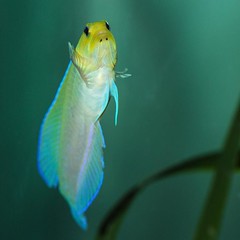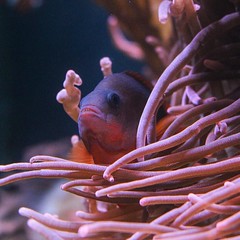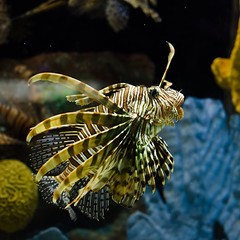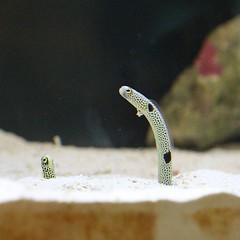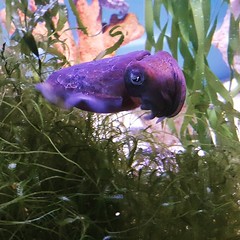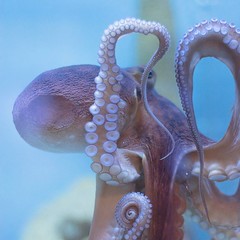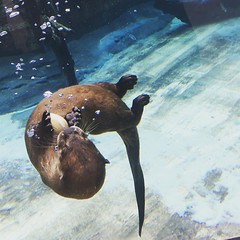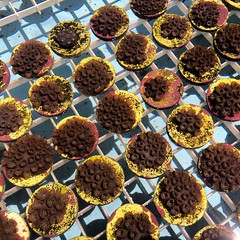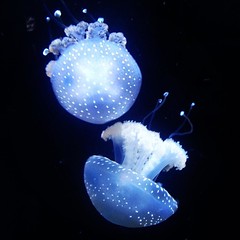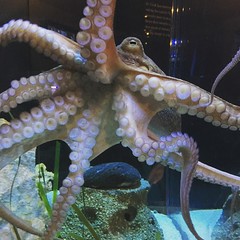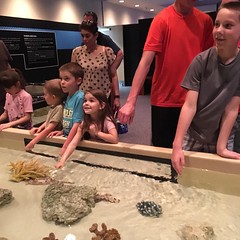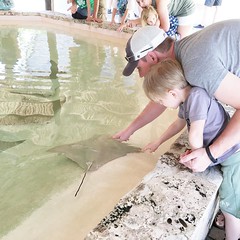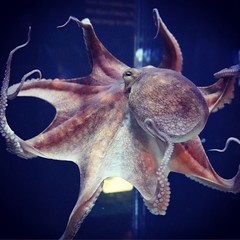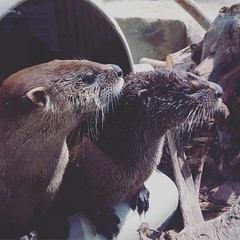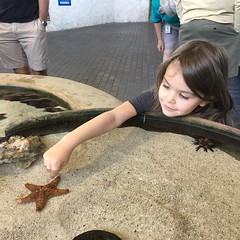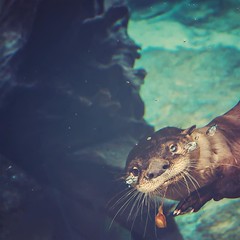1600 Ken Thompson Parkway
Sarasota, FL 34236
Ph: (941) 388-4441
Hours: 10AM - 5PM
A 501(c)3 nonprofit organization.
Stanley
Loggerhead (Caretta caretta)
(ST12009)
| Age Class | Hatchling |
| Gender | Unknown |
| Date Stranded | March 19, 2012 |
| Location of Stranding | Marco Island |
| Date of Arrival | March 19, 2012 |
| Number of Days of Care | 652 days |
Final Disposition
Released from a boat July 3, 2012

3/20 Mote’s Sea Turtle Rehabilitation Hospital recently received a tiny new patient: a loggerhead turtle weighing just under 5 ounces. Nicknamed Stanley, the turtle was brought to Mote on March 20 by staff from the Florida Fish and Wildlife Conservation Commission (FWC). FWC staff retrieved the turtle from a member of the public who said they rescued it from a canal in Marco Island. Stanley arrived at Mote with abscesses on its body and around its eyes, which were closed. Mote staff cleaned the abscesses from Stanley’s eyes and are giving the turtle antibiotics and food. Stanley is eating well and showing good energy!
7/3 Stanley was released from a boat seven miles offshore of Sarasota.

Mote’s Turtle Hospital normally receives larger sea turtles, including older juveniles, subadults and adults, along with hatchlings that did not make their way from the nesting beach to the sea.
Stanley’s case is unusual: Based on the size of Stanley’s upper shell — about 3.5 inches long — the turtle probably hatched last year. Loggerhead sea turtles at this stage of life would normally be found far offshore in clumps of seaweed called Sargassum. How Stanley remained behind is unknown.
“We have never had a rescued turtle come into our hospital during this part of its life,” said Lynne Byrd, Mote’s medical care and rehabilitation coordinator. “Even in the most unusual cases, our goal is the same: Taking the best possible care of each individual turtle, for the benefit of these threatened and endangered species.”
All sea turtles are threatened or endangered and are protected by state and federal laws. The loggerhead sea turtle population that nests in Southwest Florida is considered threatened.
Protecting sea turtles is important year ‘round — especially as Southwest Florida prepares for sea turtle nesting season, May 1-Oct. 31. Here are some tips to help clear the way for nesting turtles and their hatchlings:
Do:
- If you encounter a nesting turtle, remain quiet and observe from a distance
- Shield or turn off outdoor lights that are visible on the beach from May through October
- Close drapes after dark and put beach furniture far back from the water
- Fill in holes that may entrap hatchlings on their way to the water
- Place trash in its proper place
Do Not:
- Approach nesting turtles or hatchlings, make noise, or shine lights at turtles
- Use flashlights or fishing lamps on the beach
- Encourage a turtle to move while nesting or pick up hatchlings that have emerged and are heading for the water
- Use fireworks on the beach
Sea turtles are protected under federal law and any harassment or interference with a sea turtle, living or dead, is subject to penalty. If you witness anyone disturbing a turtle or find an injured or disoriented hatchling or adult, please notify agents with the Florida Fish and Wildlife Conservation Commission at 1-888-404-FWCC (3922), the local sheriff’s department, and/or Mote Marine Laboratory’s Sea Turtle Program at 388-4331. If you find a dead or injured sea turtle, contact Mote’s Stranding Investigations Program at 888-345-2335.
